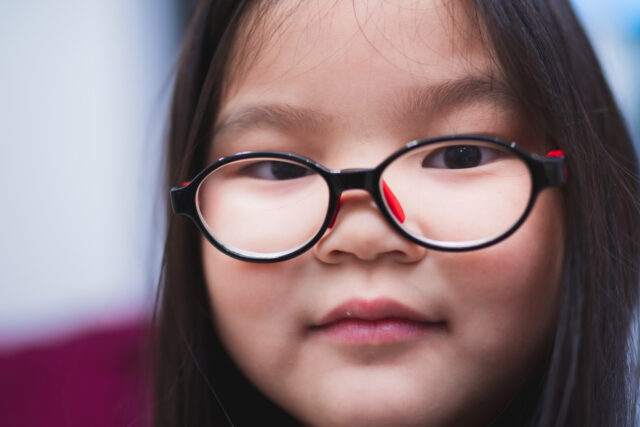
Red light therapy or repeated low-level red light (RLRL) therapy emerges as a potentially groundbreaking approach to managing high myopia in children. A recent study published in Ophthalmology by Dr. Yan Xu and colleagues demonstrates significant promise for this non-invasive treatment.
Key takeaways for eyecare professionals:
- Effective axial length control: RLRL therapy significantly reduced axial elongation, a key factor in myopia progression, compared to controls. Over half of the treated group experienced axial shortening.
- Slows refractive error progression: While not reversing myopia, the intervention group showed a marked improvement in spherical equivalent refraction compared to controls whose vision worsened.
- Favorable safety profile: The study reported only one case of mild conjunctivitis in the treatment group, suggesting a safe profile for RLRL therapy.
This study adds to the growing body of evidence supporting RLRL therapy as a viable tool for managing high myopia in children. While the long-term effects and optimal treatment protocols need further investigation, the initial findings are encouraging.
Here’s how this translates to your practice:
- Early intervention is crucial: The study participants had a median age of 11, highlighting the importance of early detection and intervention for high myopia.
- RLRL as a complementary therapy: Consider RLRL as a potential adjunct to traditional myopia management strategies like eyeglasses and contact lenses.
- Stay informed on evolving therapies: Myopia management is a rapidly evolving field. Keeping abreast of novel approaches like RLRL allows you to offer the best possible care to your young patients.
Limitations of the study to consider:
- The study defines high myopia with a -4D cutoff, lower than some commonly used standards.
- Longer follow-up periods are needed to assess long-term efficacy.
- Potential bias due to participant awareness of their assigned treatment group exists.
Overall, RLRL therapy presents an exciting prospect for managing high myopia in children. Further research will solidify its role in the optometrist’s toolkit for treating this growing public health concern.




